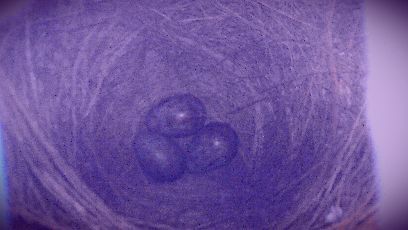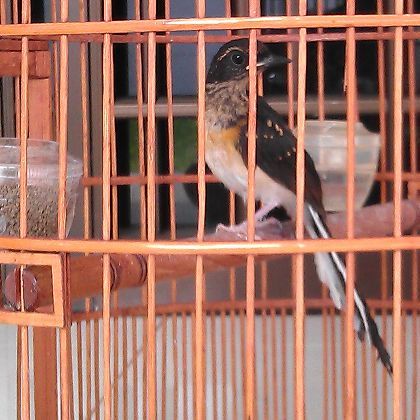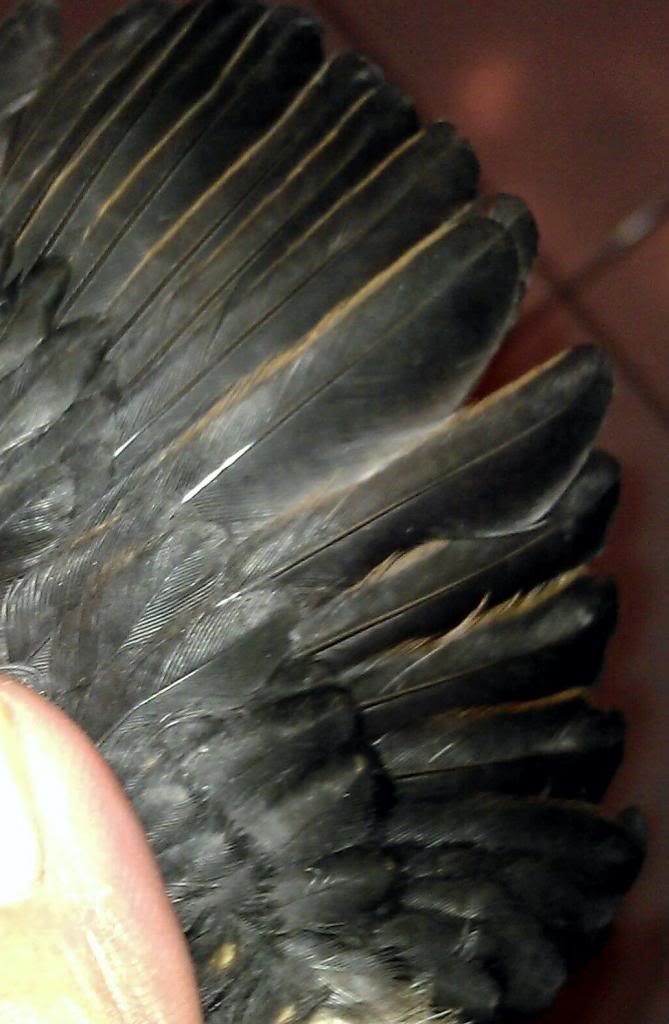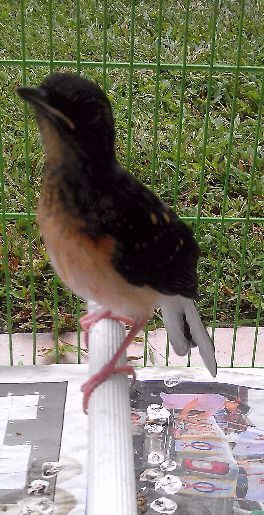Rock and Roll are now three and a half weeks old. I took a video of them today while they were having their daily dose of morning sunshine. Rock (on the cage floor) is male. I am still not too sure about Roll.
Thursday, September 26, 2013
Tuesday, September 24, 2013
Breeding without supplementing with fishes and small frogs.
For the last 2 to 3 months, Fatina has not been given any supplementary feedings of fishes or frogs. Her main source of calcium is still the dish of crushed sea shells mixed with egg shells. She is currently sitting another clutch of 3 good sized eggs.


Monday, September 23, 2013
My thoughts on the good breeder.
Firstly, the good breeder must be able to understand and appreciate the characteristics of the species. He must be aware of the characteristics that had in the first place, made the species so irresistible and so popular with the hobbyists. He is guided only by a vision in his head, of a magnificient specimen that could excel in all the desired traits and he will not compromise with the fads and trends created to capitalise on the popularity of the species.
At the same time, he must always be conscious of the status of the species in the wild and will do his best to contribute in anyway he can for the conservation of the species. He must always try his best to prevent his captive breeding from causing any significant impacts on the wild genetic pool.
Secondly, the good breeder must also be knowledgeable. He is driven by his genuine passion to continuously seek out the knowledge that could help him towards his goal of producing quality specimens and to provide the best for the birds under his care. He will continuosly strive to have a deeper understanding of matters related to what he is doing and will make sacrifices in order to obtain the answers that he seek. He will not preach what he is unsure of but he will readily share his experiences.
Finally, the good breeder must strike a balance between profits and ethics. The latter serves to preserve the meaning of being involved in a hobby. A breeder with no ethics will not have the integrity that the hobbyists need to rely upon and he will never be able to earn the respect from fellow breeders.
No, I am not talking about myself. I am just reminding myself to never lose sight of my objectives.
At the same time, he must always be conscious of the status of the species in the wild and will do his best to contribute in anyway he can for the conservation of the species. He must always try his best to prevent his captive breeding from causing any significant impacts on the wild genetic pool.
Secondly, the good breeder must also be knowledgeable. He is driven by his genuine passion to continuously seek out the knowledge that could help him towards his goal of producing quality specimens and to provide the best for the birds under his care. He will continuosly strive to have a deeper understanding of matters related to what he is doing and will make sacrifices in order to obtain the answers that he seek. He will not preach what he is unsure of but he will readily share his experiences.
Finally, the good breeder must strike a balance between profits and ethics. The latter serves to preserve the meaning of being involved in a hobby. A breeder with no ethics will not have the integrity that the hobbyists need to rely upon and he will never be able to earn the respect from fellow breeders.
No, I am not talking about myself. I am just reminding myself to never lose sight of my objectives.
Wednesday, September 18, 2013
JL54 to be sold to a player.
Last year, Funkie fathered 3 chicks, out of which only a female survived. It was disappointing because we had hoped that there will be male offsprings to give us some indications as to whether his sons will be birds worthy of the arena.
JL54 is now 7 weeks old. I had taken some efforts to get him ready for his new owner. He eats his dry food very well (broiler chicken feed). He is in perfect health and already well exposed to human crowds and street traffic. Since the intention is for him to be tested in the arena, I had also made sure that he is not hand-tamed (human imprinted).
He will be raised by a player henceforth and that will enable us to get the feedback that we want, for future breeding plans.

JL54 is now 7 weeks old. I had taken some efforts to get him ready for his new owner. He eats his dry food very well (broiler chicken feed). He is in perfect health and already well exposed to human crowds and street traffic. Since the intention is for him to be tested in the arena, I had also made sure that he is not hand-tamed (human imprinted).
He will be raised by a player henceforth and that will enable us to get the feedback that we want, for future breeding plans.

Sunday, September 15, 2013
Feathers are windows to the health
 Rock(JL57) and Roll(JL58) fledged 2 days ago. They went through a physical examination today and all seemed well.
Rock(JL57) and Roll(JL58) fledged 2 days ago. They went through a physical examination today and all seemed well. The flight feathers are all good and there are no retained sheaths and no fault bars to indicate any periods of starvation.
Tuesday, September 10, 2013
Ringing shama chicks (closed rings)
I close ringed the chicks when they are between six to ten days old. The ring size I use are the same as those for grass parakeets.
Here is a video taken today. The two chicks are from the latest clutch out of Funkie and Fatina, hatched on 31st August and 1st September 2013. (One is named Rock and the other Roll).
Here is a video taken today. The two chicks are from the latest clutch out of Funkie and Fatina, hatched on 31st August and 1st September 2013. (One is named Rock and the other Roll).
Pick of clutch hatched on 25th July 2013
This is JL54, the only male and pick of clutch from the first successful hatching this year out of Funkie and Fatina.
At 3 weeks after hatching....................................................At 6 weeks after hatching
Reasonably good head on a quite well defined neck and good strong legs.
At 3 weeks after hatching....................................................At 6 weeks after hatching
Saturday, September 7, 2013
Asynchronous hatching - Part 4 (The thrill is gone)
It could have been the thrill worth waiting for. The thrill to watch a successful struggle against the odds. A hatching so asynchronously perfect for this purpose.
But it's not to be. The last-hatched was gone. Gone without a trace. I searched the aviary floor for its remains but there were none.
The thrill is gone...
(The two older chicks from this clutch are doing well and they will survive).
But it's not to be. The last-hatched was gone. Gone without a trace. I searched the aviary floor for its remains but there were none.
The thrill is gone...
(The two older chicks from this clutch are doing well and they will survive).
Friday, September 6, 2013
Classic case of convulsion due to thiamine (vitamin B1) deficiency.
Sometime towards the end of March this year, Funkie had a convulsion soon after he was paired up. Convulsions in shamas can be due to various causes but this was a classic case of one that was due to thiamine deficiency and most probably an acute deficiency, arising from the diet being provided for the breeding pair. The live food diet that was provided consists of insects and baby carps. The inclusion of baby carps (known to be high in thiaminase, an enzyme that will destroy thiamine) in the diet was because guppies were not available to me then and it was meant only to be a temporary measure to supply the much needed calcium for the breeding hen.
It is quite possible that the farmed insects were unable to provide sufficiently for thiamine and this could be made worse by the thiaminase from the baby carps, resulting in the deficiency being manifested very quickly soon after the introduction to this breeding diet.
Opisthotonic posturing, sometimes described as star gazing is one of the typical signs of a shama convulsion caused by thiamine deficiency. Paralysis of the anterior neck muscles will cause the neck to arch backwards. There will be total lost of control over the anterior neck muscles during the convulsion and the bird will be unable to point its beak forward as in a normal situation but instead, the beak on the retracted head will be pointed skywards, hence the description of 'star gazing'.
The other classic sign of the shama convulsion caused by thiamine deficiency is the paralysis of the leg muscles, starting from the toes. The bird will lost its control of the leg muscles and will be unable to stand or sit upright. It will normally be found lying on its back or side. It could also sometimes be found sitting wobbly on its hocks. The bird will normally be quite still but when touched, will try to struggle, toppling all over the cage floor, only to confirm the paralysis of the leg muscles.
Convulsions in shama caused by thiamine deficiency can be revived most of the time with an oral dose of vitamin B-complex.
The above video was taken on 30 March at 6am when Funkie was found convulsing on the cage floor. An oral dose of liquid vitamin B-complex (made by dissolving a B-complex tablet in water) was given immediately via a syringe.
The following video was taken about 10 minutes later. This was the early stage towards recovery. The bird had managed to be upright but was only able to sit on its hocks. It made an attempt to fly too soon, before regaining full muscular control and coordination, resulting in its falling back onto the cage floor.
The following video was taken a while later, showing the bird regaining full muscular control of the neck and picking up the mealworms being offered.
the video below was taken at the point when the bird was approaching full recovery from both the neck and leg paralysis, displaying sufficient muscular coordinations to shake its feathers.
Soon afterwards, it was able to fly up to the highest perch of the aviary to join the female.
It is quite possible that the farmed insects were unable to provide sufficiently for thiamine and this could be made worse by the thiaminase from the baby carps, resulting in the deficiency being manifested very quickly soon after the introduction to this breeding diet.
Opisthotonic posturing, sometimes described as star gazing is one of the typical signs of a shama convulsion caused by thiamine deficiency. Paralysis of the anterior neck muscles will cause the neck to arch backwards. There will be total lost of control over the anterior neck muscles during the convulsion and the bird will be unable to point its beak forward as in a normal situation but instead, the beak on the retracted head will be pointed skywards, hence the description of 'star gazing'.
The other classic sign of the shama convulsion caused by thiamine deficiency is the paralysis of the leg muscles, starting from the toes. The bird will lost its control of the leg muscles and will be unable to stand or sit upright. It will normally be found lying on its back or side. It could also sometimes be found sitting wobbly on its hocks. The bird will normally be quite still but when touched, will try to struggle, toppling all over the cage floor, only to confirm the paralysis of the leg muscles.
Convulsions in shama caused by thiamine deficiency can be revived most of the time with an oral dose of vitamin B-complex.
The above video was taken on 30 March at 6am when Funkie was found convulsing on the cage floor. An oral dose of liquid vitamin B-complex (made by dissolving a B-complex tablet in water) was given immediately via a syringe.
The following video was taken about 10 minutes later. This was the early stage towards recovery. The bird had managed to be upright but was only able to sit on its hocks. It made an attempt to fly too soon, before regaining full muscular control and coordination, resulting in its falling back onto the cage floor.
The following video was taken a while later, showing the bird regaining full muscular control of the neck and picking up the mealworms being offered.
the video below was taken at the point when the bird was approaching full recovery from both the neck and leg paralysis, displaying sufficient muscular coordinations to shake its feathers.
Soon afterwards, it was able to fly up to the highest perch of the aviary to join the female.
Wednesday, September 4, 2013
Asynchronous hatching - Part 3
In captivity where there will be no shortage of food supply, will asynchronous hatching that had resulted in the disparities among the chicks from the same clutch be of any significance to the survival of the later-hatched chicks?
Here is a video taken today of the last-hatched. The posthatching vigour after 24 hours is a very good indication that it has so far, been capable of competing well with its older and more developed siblings for food and parental attention.
Here is a video taken today of the last-hatched. The posthatching vigour after 24 hours is a very good indication that it has so far, been capable of competing well with its older and more developed siblings for food and parental attention.
Tuesday, September 3, 2013
Asynchronous hatching - Part 2
The third chick hatched this morning. Being 3 days younger than its oldest sibling and 2 days younger than another, it will be greatly disadvantaged. The size disparity is clear to see.
In the wild, the youngest chick from asynchronous hatching being weaker, will not be able to compete with its larger siblings for food during times of food shortage and may starve to death. In this way, the brood size will be reduced when there is a need to balance with the food availability.
However, mother nature can often times be quite contradictory and hard to understand. Studies in some passerines have shown that mother nature will at the same time, also provide the last to hatch with a fair chance to compete with its larger siblings for survival.
Before the eggs are laid, the mother bird, besides the accretion of standard nutrients, will also deposit maternal hormones in the yolk. One of these hormones is testosterone. The eggs will not receive equal amounts of testosterones but instead, the first egg to be laid will receive the least amount and the last to be laid will receive the most. Testosterone plays a compensatory role in the posthatching environment. Studies have shown that elevated yolk testosterone will enhance postnatal growth (e.g. Schwabl 1996; Eising et al. 2001; Navara et al. 2005). This will benefit the survival of later-hatched chicks. Higher yolk testosterone is also hypothesized to enhance posthatching begging, further benefiting the later-hatched chicks.
In captivity, free-flow food supply will be provided and there will be no exception for this clutch. Hopefully, this last-hatched chick will soon catch up with its older siblings.
Monday, September 2, 2013
Mother knows best
Earlier observations while experimenting with crushed shells as the source of calcium supply to the egg-laying female had revealed that it may be possible to also supplement the newly hatched chicks with this same source of calcium.
A decision was made to further experiment with this form of calcium supplementation using our newly hatched clutch. Right from the start, fishes (and frogs) were excluded from their live food supply. As a result, the parent birds were left only with an all-insect live food to raise these chicks. An all-insect live food diet will be grossly inverted in the calcium to phosphurus ratio. Will the parents utilize the crushed shells, just as the female had during the egg laying period, to correct this?
Video of Fatina coating a mealworm with the crushed shells before bringing it to the nest to feed one of her newly hatched chicks:
Video of Fatina rolling a cricket in the crushed shells before bringing it to the nest to feed one of her newly hatched chicks:
A decision was made to further experiment with this form of calcium supplementation using our newly hatched clutch. Right from the start, fishes (and frogs) were excluded from their live food supply. As a result, the parent birds were left only with an all-insect live food to raise these chicks. An all-insect live food diet will be grossly inverted in the calcium to phosphurus ratio. Will the parents utilize the crushed shells, just as the female had during the egg laying period, to correct this?
Video of Fatina coating a mealworm with the crushed shells before bringing it to the nest to feed one of her newly hatched chicks:
Video of Fatina rolling a cricket in the crushed shells before bringing it to the nest to feed one of her newly hatched chicks:
Sunday, September 1, 2013
Asynchronous hatching - Part 1
Shama eggs will hatch asynchronously. This is typical of most altricial species. The interval between the hatching of the first and the last eggs can be from a few hours to a few days. Much will depend on the onset of incubation.
The Second successful clutch this year from Funkie and Fatina started to hatch since yesterday morning, with a day's interval between the 2 chicks that had hatched so far. The first of four eggs of this clutch was laid on 18th August and the last egg was laid on 21st August. Night time incubation by the hen was observed to start after the second egg was laid. The remaining two eggs, if also fertile, are expected to hatch by tomorrow or the day after.
The Second successful clutch this year from Funkie and Fatina started to hatch since yesterday morning, with a day's interval between the 2 chicks that had hatched so far. The first of four eggs of this clutch was laid on 18th August and the last egg was laid on 21st August. Night time incubation by the hen was observed to start after the second egg was laid. The remaining two eggs, if also fertile, are expected to hatch by tomorrow or the day after.
Subscribe to:
Posts (Atom)



